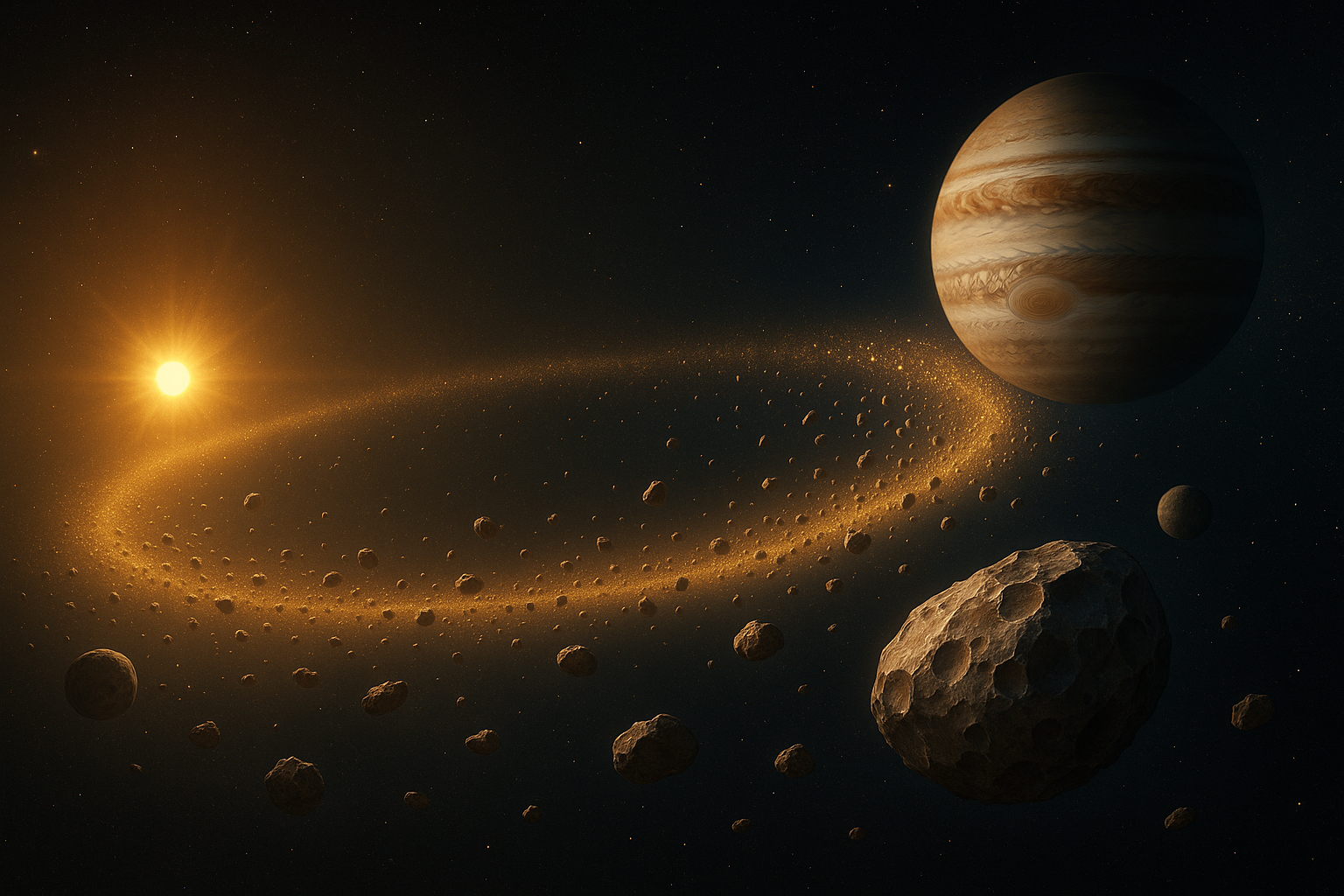
When we think of the solar system, we usually picture the
Sun, eight planets, and perhaps Pluto. But lying quietly between Mars and
Jupiter is an extraordinary region — the Main Asteroid Belt.
This belt is not a tightly packed danger zone like in
science fiction movies, but rather a vast region filled with scattered remnants
of the early solar system. These bodies — from tiny dust grains to dwarf
planets — are pieces of a planet that never came to be.
Where Is the Asteroid Belt?
The Main Asteroid Belt lies between 2.1 and 3.3
astronomical units (AU) from the Sun — about 320 to 480 million kilometers
away. It separates the rocky inner planets (Mercury, Venus, Earth,
Mars) from the gas giants (Jupiter, Saturn, Uranus, Neptune).
Although there are millions of asteroids, they are
spread out across such a large volume of space that the region is mostly empty.
If you stood on an asteroid, the nearest neighbor would likely be hundreds of
thousands of kilometers away.
A Planet That Never Was
For centuries, astronomers speculated that the asteroid belt
might be the shattered remains of a planet. This idea made sense when the first
asteroids were discovered in the early 1800s.
But modern science tells a different story:
The asteroid belt, then, is not the wreckage of a lost world
— but the unfinished remains of planet formation.
The Belt’s Largest Members
Among the millions of smaller asteroids, a few stand out as
true “mini-worlds”:
Together, these objects show that even small worlds can have
complex geologies and histories.
The Diversity of Asteroids
Asteroids in the belt are grouped into three broad
categories:
Studying these types helps scientists reconstruct the
conditions of the early solar system.
The Mystery of Psyche
One of the most intriguing asteroids is 16 Psyche.
Unlike most asteroids, Psyche is dominated by metal — iron and nickel
— similar to Earth’s core.
Astronomers believe Psyche may be the exposed core of a
protoplanet that lost its outer rocky layers in violent collisions
billions of years ago.
NASA’s Psyche Mission, launched in 2023 and arriving in
2029, will orbit Psyche and study it up close. This mission could offer
our first direct look at the inside of a planetary core — something
we cannot access on Earth.
Exploration of the Belt
The asteroid belt has been a key target for planetary
exploration:
Why the Asteroid Belt Matters
The Main Asteroid Belt is not just a region of leftover
rocks. It is:
Final Thought
The Main Asteroid Belt is a place of paradox: it is both
empty space and filled with ancient worlds. It is a planet that never formed,
yet it holds within it the pieces of planetary evolution.
By studying Ceres, Vesta, Psyche, and countless smaller
bodies, scientists are not just exploring asteroids — they are reconstructing
the solar system’s earliest history.
Far from being rubble, the asteroid belt is a cosmic
archive, preserving the story of creation in stone and metal.
